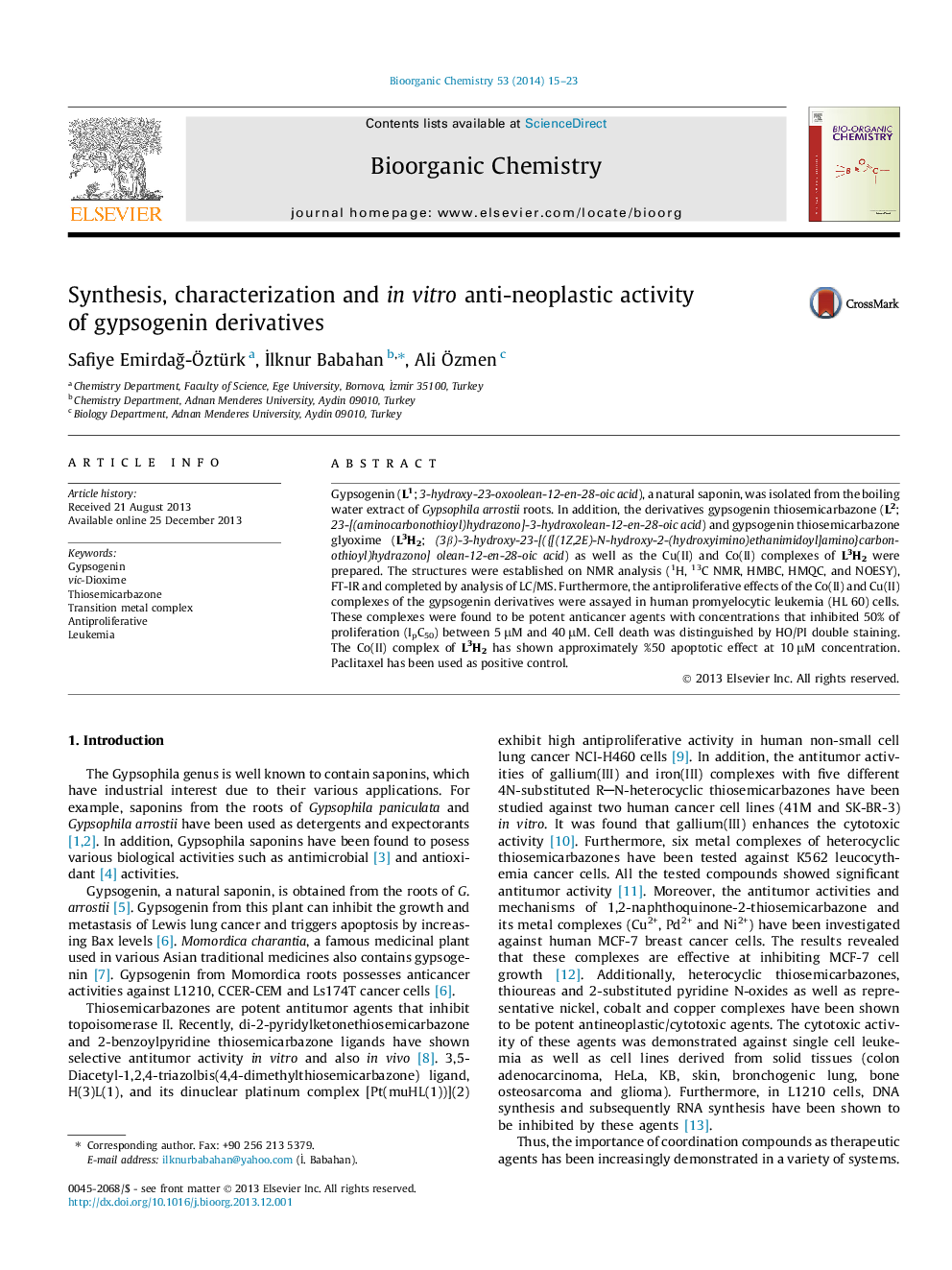| کد مقاله | کد نشریه | سال انتشار | مقاله انگلیسی | نسخه تمام متن |
|---|---|---|---|---|
| 1355629 | 1500461 | 2014 | 9 صفحه PDF | دانلود رایگان |

• Preparation of novel ligands.
• Preparation of novel complexes.
• Characterization of ligands and complexes.
• Using 1H NMR, 13C NMR, MS and infrared spectroscopy.
• Antiproliferative activity.
Gypsogenin (L1; 3-hydroxy-23-oxoolean-12-en-28-oic acid), a natural saponin, was isolated from the boiling water extract of Gypsophila arrostii roots. In addition, the derivatives gypsogenin thiosemicarbazone (L2; 23-[(aminocarbonothioyl)hydrazono]-3-hydroxolean-12-en-28-oic acid) and gypsogenin thiosemicarbazone glyoxime (L3H2; (3β)-3-hydroxy-23-[({[(1Z,2E)-N-hydroxy-2-(hydroxyimino)ethanimidoyl]amino}carbonothioyl)hydrazono] olean-12-en-28-oic acid) as well as the Cu(II) and Co(II) complexes of L3H2 were prepared. The structures were established on NMR analysis (1H, 13C NMR, HMBC, HMQC, and NOESY), FT-IR and completed by analysis of LC/MS. Furthermore, the antiproliferative effects of the Co(II) and Cu(II) complexes of the gypsogenin derivatives were assayed in human promyelocytic leukemia (HL 60) cells. These complexes were found to be potent anticancer agents with concentrations that inhibited 50% of proliferation (IpC50) between 5 μM and 40 μM. Cell death was distinguished by HO/PI double staining. The Co(II) complex of L3H2 has shown approximately %50 apoptotic effect at 10 μM concentration. Paclitaxel has been used as positive control.
Here, as part of our ongoing studies, we report the isolation of the known saponin gypsogenin (L1) and the synthesis and potential anticancer activity of new gypsogenin ligands (gypsogenin thiosemicarbazone (L2) and gypsogenin thiosemicarbazone glyoxime (L3H2). In addition, we determined the antiproliferative activities of the novel Cu(II) and Co(II) complexes of L3H2 for the first time using human promyelocytic leukemia (HL 60) cells. The Cu(II) complex of L3H2 was determined to have the strongest antiproliferative activity, with an IpC50 value of 5 μM. Cell death was distinguished by HO/PI double staining. The Co(II) complex of L3H2 has shown approximately %50 apoptotic effect at 10 μM concentration. Paclitaxel has been used as positive control.Figure optionsDownload as PowerPoint slide
Journal: Bioorganic Chemistry - Volume 53, April 2014, Pages 15–23